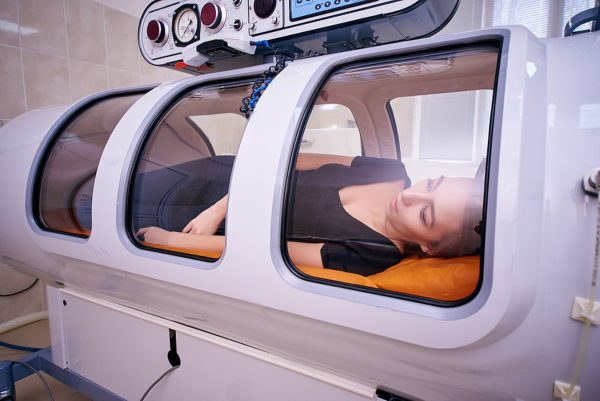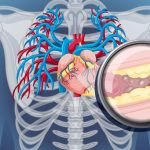Back in 1931 doctor Otto Warburg, M.D. won the Nobel Prize in medicine. He was a German Jew in pre-World War II Nazi Germany. So it must have been a difficult decision to award it to him. But they had to, because he was the first to recognize the metabolism of cancer.
He discovered that cancer can’t grow and metastasize in two different conditions.
One was a high oxygen tension environment, like that of a hyperbaric chamber. But hyperbaric oxygen therapy (HBOT) wasn’t really available back then.
The second thing he discovered is that cancer can’t live in an alkaline environment. Cancer needs acid to spread, that’s why it loves sugar. Meat, dairy and alcohol can also lead to an acidic body. So an alkaline body is going to be one that’s basically vegan.
Now these are two great discoveries. But the fact that cancer can’t live in a high oxygen tension environment was absolutely groundbreaking. And we’ve learned a lot more about oxygen therapy since then.
We really didn’t use hyperbaric oxygen for much until the 1940’s. That’s when the U.S. navy started using it during World War II for people who got the bends when they came up too quick from scuba diving to get the excess nitrogen out of their bloodstream.
But now that we’ve been using it for a while, we’re discovering more and more of what HBOT can do for the human body.
Does Your Body Need More Oxygen?
Of course, as Otto Warburg discovered, HBOT helps prevent cancer from spreading.
But over the years, we’ve learned this type of therapy can be used for healing all sorts or health problems. That’s because hyperbaric oxygenation is the only way to increase the concentration of oxygen gas in tissue that has impaired blood supply.
So it’s good for stroke, heart attack, heart disease and vascular dementia patients. It improves oxygen supply to the heart and stimulates healing – even in wounds. And I’ve seen it work wonders on patients.
For example, I had a young woman with systemic vasculitis. She was about 35 and had a child. She was in terrible pain. They were giving her awful amounts of opiates, more and more as time went by.
I placed her on a nutritional plan, and she went into a hyperbaric chamber five or six days a week for about eight weeks.
When she came out, all of the inflammation was gone. Her blood vessels weren’t inflamed anymore.
It also helps with cognitive disorders by strengthening neurons and building new connections.
Here’s another success story.
I saw an army veteran who came out of Iraq with some awful chronic conditions. We were detoxing him, but he also went into the hyperbaric chamber.
His brain neuroplasticity increased after his treatments and he got his brain back! I love outcomes like these.
The fact is HBOT is good for so many things. It may even be able to protect you from aging.
Why We All Want Longer Telomeres
How you age is strongly related to the length of your telomeres and the ability of your cells to reproduce.
These telomeres are located at the end of chromosomes where their job is to maintain genomic stability. But every time your cells replicate, a little bit of the telomere shortens. So the older you get, the shorter your telomeres get. And the shorter your telomers get, the older you get.
Now, all kinds of things can affect the length of your telomeres. The foods you eat, your weight, how much physical activity you get, how stressed you are and a bunch of other things.
But when telomeres get too short, it makes it easier to end up in a diseased state; diabetes, cancer, heart disease, Alzheimer’s and all kinds of other crap. Nobody wants that. We all want long telomeres.
It turns out the HBOT treatment can help.
When 35 people who were 64 or older took HBOT sessions, the length of telomeres in certain cells increased by 20% to nearly 40%. And the number of cells that could no longer replicate dropped by 11%-37%, depending on the cell type.
This is just amazing! It means better immune health, less disease and more years of healthy living.
Of course, this type of treatment wouldn’t be covered by your insurance company. But if you compare the cost of years of prescription drugs and hospital visits to the cost of HBOT, it might be something worth considering.
SOURCES:
Efrati S, Fishlev G, Bechor Y, Volkov O, Bergan J, Kliakhandler K, Kamiager I, Gal N, Friedman M, Ben-Jacob E, Golan H. Hyperbaric oxygen induces late neuroplasticity in post stroke patients–randomized, prospective trial. PLoS One. 2013;8(1):e53716.
Bennett MH, Lehm JP, Jepson N. Hyperbaric oxygen therapy for acute coronary syndrome. Cochrane Database Syst Rev. 2011 Aug 10;(8).
Hadanny A, Daniel-Kotovsky M, Suzin G, Boussi-Gross R, Catalogna M, Dagan K, Hachmo Y, Abu Hamed R, Sasson E, Fishlev G, Lang E, Polak N, Doenyas K, Friedman M, Tal S, Zemel Y, Bechor Y, Efrati S. Cognitive enhancement of healthy older adults using hyperbaric oxygen: a randomized controlled trial. Aging. 2020 Jun 26;12(13):13740-13761.
Mathieu D, Marroni A, Kot J. Tenth European Consensus Conference on Hyperbaric Medicine: recommendations for accepted and non-accepted clinical indications and practice of hyperbaric oxygen treatment. Diving Hyperb Med. 2017 Mar;47(1):24-32.
Hachmo Y, Hadanny A, Abu Hamed R, Daniel-Kotovsky M, Catalogna M, Fishlev G, Lang E, Polak N, Doenyas K, Friedman M, Zemel Y, Bechor Y, Efrati S. Hyperbaric oxygen therapy increases telomere length and decreases immunosenescence in isolated blood cells: a prospective trial. Aging (Albany NY). 2020 Nov 18;12(22):22445-22456.



